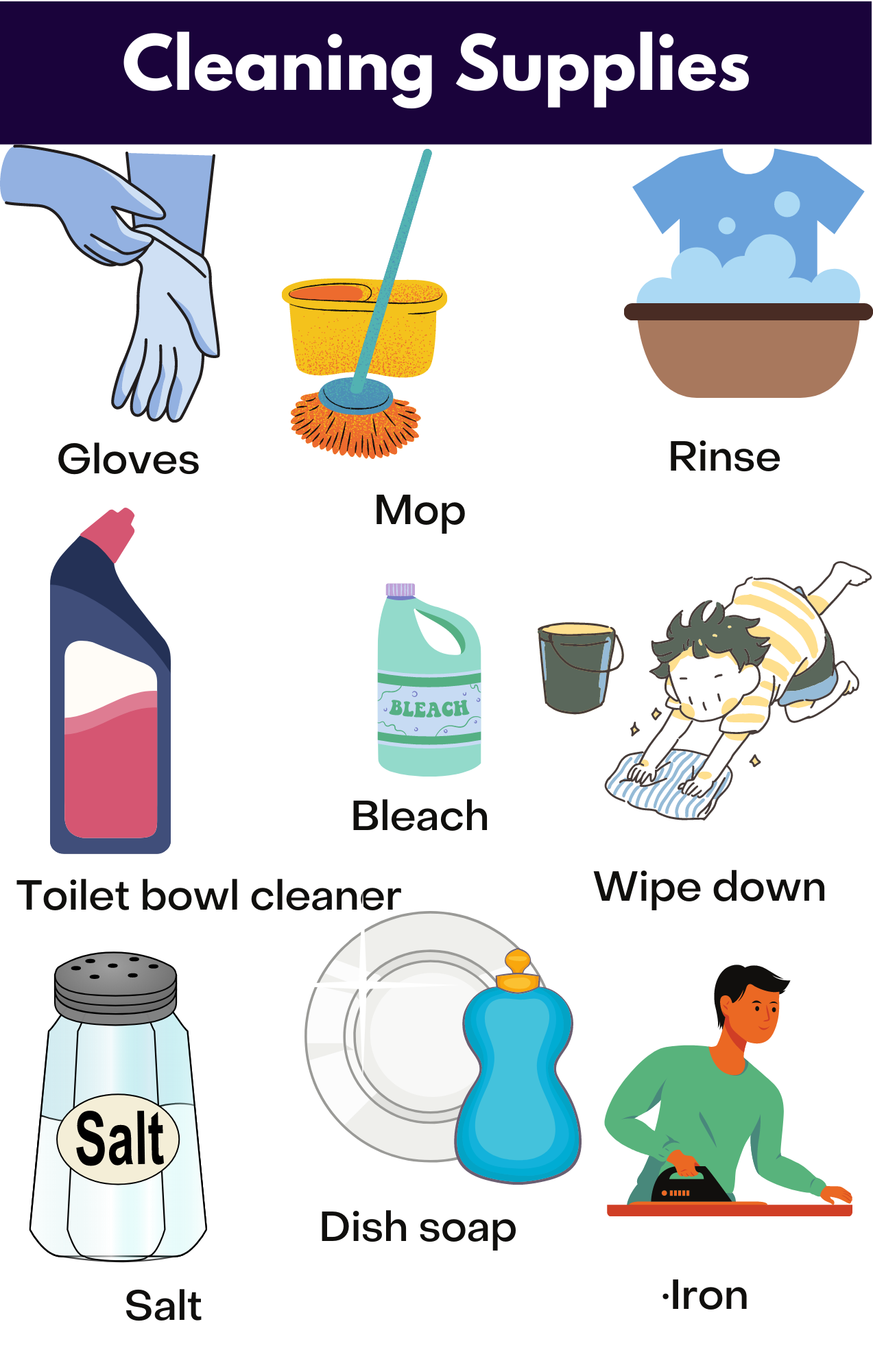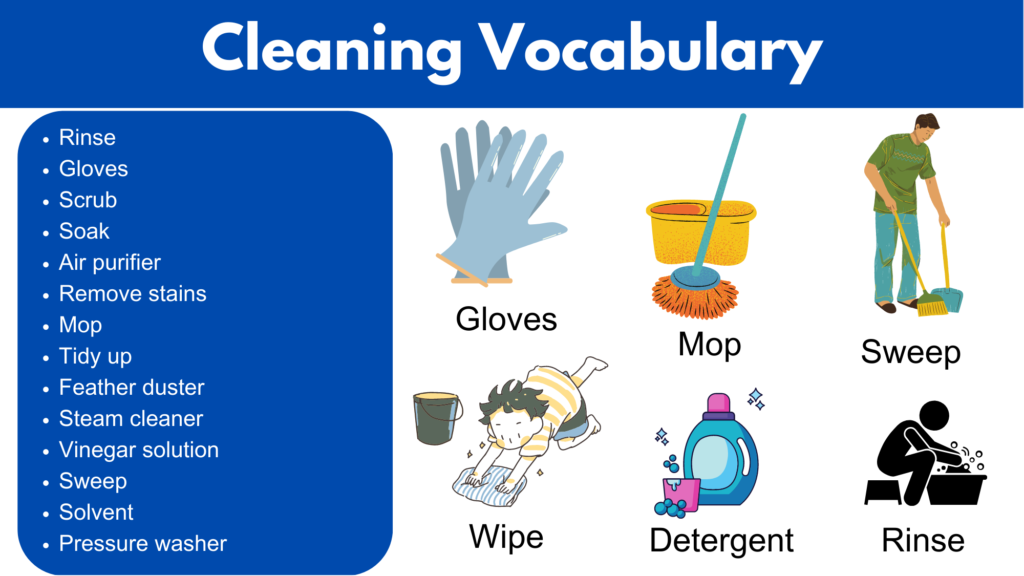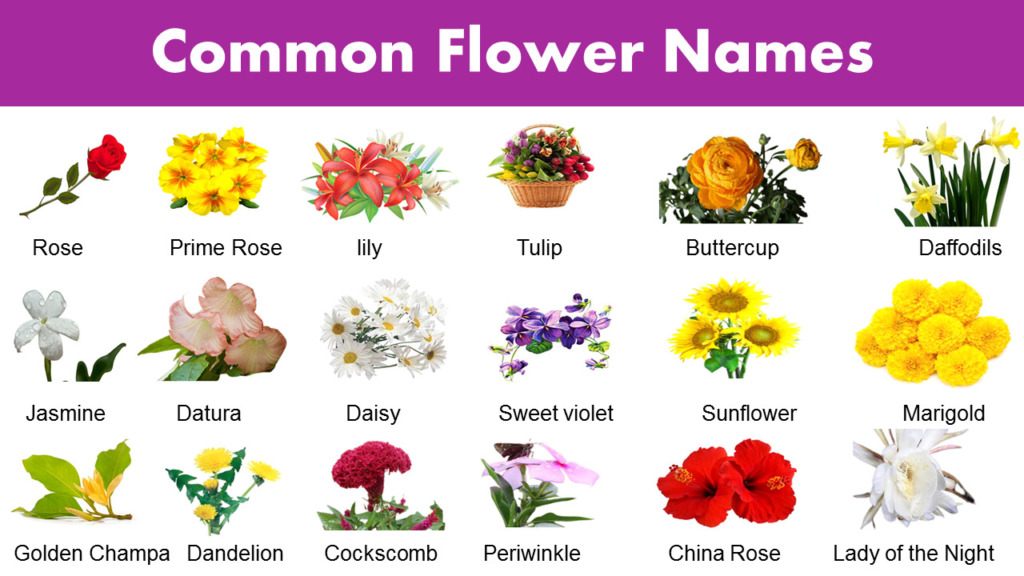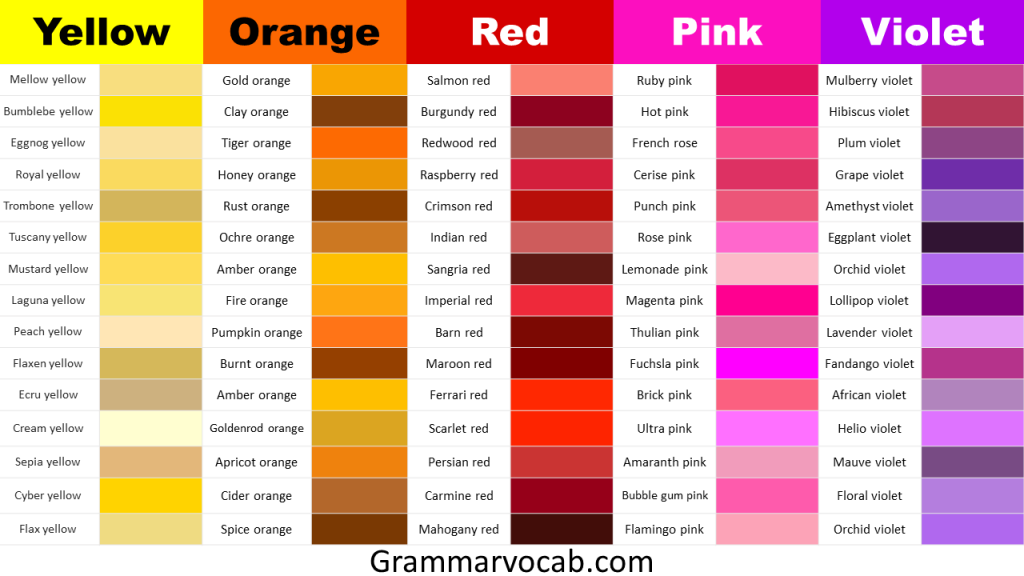When it comes to cleaning, having a good understanding of the vocabulary associated with cleaning supplies can go a long way in helping you get the job done right. From understanding the difference between disinfectants and sanitizers to knowing which cleaning tools work best for different surfaces, there are many terms to know. Whether you’re a seasoned cleaning professional or a beginner just starting to build your cleaning supply collection, this list of cleaning vocabulary will help you navigate the world of cleaning supplies with confidence. In this blog post, we’ll cover some of the most important terms to know.
Cleaning Vocabulary Words
here are some common vocabulary words related to cleaning:
- Rinse
- Gloves
- Scrub
- Soak
- Air purifier
- Remove stains
- Mop
- Tidy up
- Feather duster
- Steam cleaner
- Vinegar solution
- Squeegee
- Sweep
- Solvent
- Pressure washer
- Window cleaner
- Freshen up
- Cleanse
- Sort out
- Wipe
- Organize
- Bleach
- Disinfect
- Sanitize
- Vacuum cleaner attachment
- Sponge
- Bucket
- Broom
- Detergent
- Air out
- Sterilize
- Scraper
- Lint roller
- Magic eraser
- Dustpan
- Purge
- Bleach solution
- Enzyme cleaner
- Microfiber cloth
- Upholstery cleaner
- Stain remover
- Carpet shampooer
- All-purpose cleaner
- Dust
- Deodorize
- Vacuum
- Degrease
- Purify
- Polish
Household Cleaning Products
here are some common household products related to cleaning:
- Toilet bowl cleaner
- Laundry detergent
- Bathroom cleaner
- Hydrogen peroxide
- Furniture polish
- Ammonia
- Castile soap
- Rubbing alcohol
- Baking soda
- White vinegar
- Disinfectant spray
- Carpet cleaner
- Oven cleaner
- Borax
- Drain cleaner
- Salt
- Dish soap
- Glass cleaner
- Air freshener
- Lemon juice
- Fabric softener
- Glycerin
Cleaning Action Words
- Rinse
- Disinfect surfaces
- Sweep away
- Vacuum up
- Wipe down
- Sanitize hands
- Rinse away
- Dust off
- Sterilize equipment
- Clean thoroughly
- Scrub off
- Polish surfaces
- Deodorize rooms
- Remove grime
- Wipe clean
- Scrub down
Cleaning Chemicals and Solutions
Here is a list of some common cleaning chemicals and solutions:
- Silver cleaner
- Hardwood floor cleaner
- Marble and granite cleaner
- Tile and grout cleaner
- Copper cleaner
- Stainless steel cleaner
- Wood cleaner and polish
- Brass cleaner
- Metal polish
- Rust remover
- Air freshener spray
- Leather cleaner
- Pet stain and odor remover
- Mildew remover
- Grease and oil remover
Laundry and Fabric Care Vocabulary
here are some common laundry and fabric care vocabulary words:
- Wool cycle
- Dryer sheets
- Hand wash
- Fabric content
- Press
- Pressing cloth
- Colorfast
- Iron
- Pre-treat
- Line dry
- Washing machine
- Dryer
- Wrinkle-free
- Delicate cycle
- Shrinkage
- Steam iron
- Tumble dry
- Pilling
- Fabric conditioner
- Lint
House Cleaning Phrases
here are some common house cleaning phrases:
- “Time to tackle the chores.”
- “Let’s get cleaning!”
- “Let’s roll up our sleeves and get to work.”
- “It’s cleaning day.”
- “Cleaning can be fun.”
- “Let’s make this place sparkle.”
- “We’ll be done in no time.”
- “A clean house is a happy house.”
- “Let’s divide and conquer.”
- “Don’t worry, we’ll take care of it.”
- “Cleaning can be therapeutic.”
- “The sooner we start, the sooner we’ll be done.”
- “Let’s make this place shine.”
- “A little cleaning goes a long way.”
- “We’ve got this, let’s do it.”
- “A clean house is a sign of a clear mind.”
- “Let’s turn up the music and get to work.”
- “Let’s make it a team effort.”
- “Cleaning can be a good workout.”
- “Let’s make sure every corner is clean.”
Floor Cleaning Terminology
Here are some common floor cleaning terminology:
Sweep – using a broom to remove dirt and debris from the surface of the floor.
Vacuum – using a vacuum cleaner to remove dirt, dust, and debris from carpets and floors.
Mop – using a mop and water or cleaning solution to clean floors.
Scrub – using a brush or scrubber to remove stubborn dirt or stains from the floor.
Polish – using a polishing machine or cloth to add shine to the floor surface.
Buff – using a buffer or polishing machine to create a smooth, shiny surface on the floor.
Strip – using a stripping solution to remove old wax, sealant, or finish from the floor surface.
Wax – applying a wax or sealant to the floor surface to protect and add shine.
Seal – applying a sealant to the floor surface to protect it from stains, spills, and wear and tear.
Steam clean – using hot water vapor to clean and disinfect the floor surface.
Dry clean – using a dry cleaning compound or a machine to clean carpets and rugs without water.
Deep clean – a thorough cleaning of the floor surface, including removing all dirt, debris, and stains.
Stain removal – the process of removing stains from the floor surface using cleaning solutions or products.
High traffic areas – areas of the floor that receive a lot of foot traffic and require more frequent cleaning and maintenance.
Floor finish – a protective coating applied to the floor surface to protect it from scratches, stains, and wear and tear.
Cleaning Supplies for Different Types of Surfaces
Here are some common cleaning supplies for different types of surfaces:
Glass: glass cleaner, microfiber cloths, squeegee, white vinegar.
Wood: wood cleaner, microfiber cloths, furniture polish, wax.
Stainless steel: stainless steel cleaner, microfiber cloths, white vinegar.
Tile and grout: tile and grout cleaner, scrub brush, mop, bleach.
Carpet: carpet cleaner, vacuum, stain remover, carpet deodorizer.
Upholstery: upholstery cleaner, vacuum, stain remover, fabric protector.
Vinyl and linoleum: all-purpose cleaner, mop, scrub brush.
Granite and marble: granite cleaner, microfiber cloths, stone sealer.
Concrete: concrete cleaner, pressure washer, scrub brush.
Brass and copper: brass or copper cleaner, microfiber cloths, lemon juice and salt.
Electronics: microfiber cloths, screen cleaner, compressed air.
Walls and ceilings: all-purpose cleaner, sponge, paint roller, drywall patching compound.
Appliances: all-purpose cleaner, microfiber cloths, degreaser.
Leather: leather cleaner, microfiber cloths, leather conditioner.
Outdoor furniture: all-purpose cleaner, pressure washer, scrub brush.
How to Organize Your Cleaning Supplies?
Organizing your cleaning supplies can help make cleaning more efficient and less stressful. Here are some tips on how to organize your cleaning supplies:
- Gather all your cleaning supplies in one place: Collect all your cleaning supplies from around the house and bring them to one central location.
- Sort your supplies: Group your cleaning supplies into categories based on their use, such as glass cleaners, all-purpose cleaners, or floor cleaners.
- Get rid of expired or unused items: Check the expiration dates on your cleaning supplies and discard any that have expired. Also, get rid of any unused or duplicate items.
- Store your supplies in containers: Use baskets, bins, or buckets to store your cleaning supplies. Label each container so you know what’s inside.
- Store supplies by frequency of use: Keep the cleaning supplies you use most frequently in a convenient and accessible location. Supplies that are used less often can be stored in a less accessible location.
- Use wall space: Install shelves or hooks on the wall to store cleaning supplies such as brooms, mops, and dusters.
- Keep hazardous materials separate: Store any hazardous cleaning supplies, such as bleach or ammonia, separately from other cleaning supplies in a locked cabinet or on a high shelf out of reach of children and pets.
- Keep it tidy: Make sure to clean your cleaning supplies regularly to prevent the buildup of dust and grime. Wipe down containers and bottles, and wash any cloths or sponges used for cleaning.
By following these tips, you can create an organized and efficient cleaning supply storage system that makes cleaning easier and more manageable.




